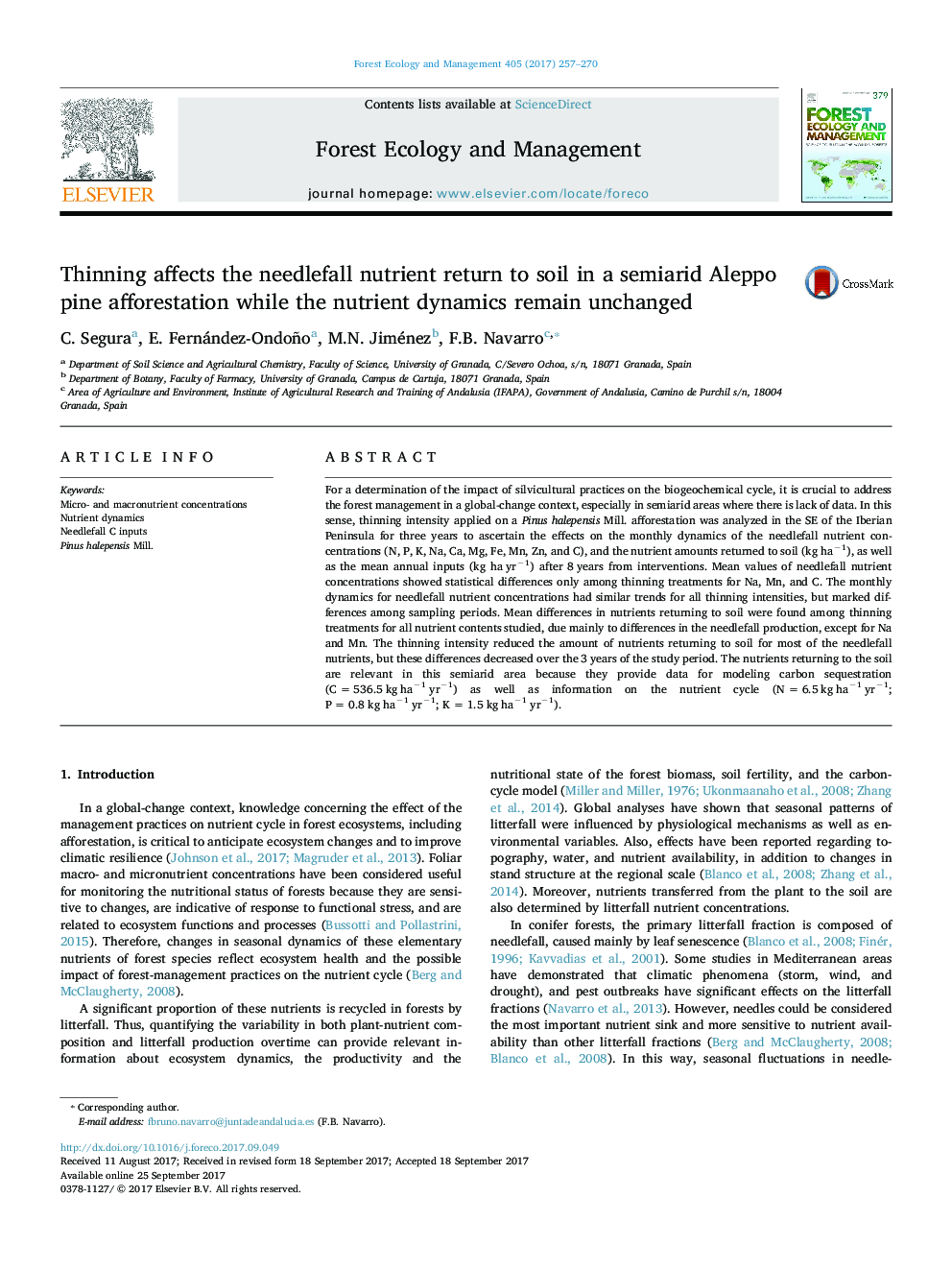| Article ID | Journal | Published Year | Pages | File Type |
|---|---|---|---|---|
| 6459087 | Forest Ecology and Management | 2017 | 14 Pages |
â¢Thinning did not affect the most needlefall-nutrient concentrations after 8 years.â¢Thinning did not change the monthly dynamics needlefall-nutrient concentrations.â¢Thinning did not change the monthly dynamics of nutrient return to soil.â¢Needlefall production controlled the effects of thinning on nutrient return to soil.â¢Thinning effects on nutrient return to soil via needlefall remain after 8 years.
For a determination of the impact of silvicultural practices on the biogeochemical cycle, it is crucial to address the forest management in a global-change context, especially in semiarid areas where there is lack of data. In this sense, thinning intensity applied on a Pinus halepensis Mill. afforestation was analyzed in the SE of the Iberian Peninsula for three years to ascertain the effects on the monthly dynamics of the needlefall nutrient concentrations (N, P, K, Na, Ca, Mg, Fe, Mn, Zn, and C), and the nutrient amounts returned to soil (kg haâ1), as well as the mean annual inputs (kg ha yrâ1) after 8 years from interventions. Mean values of needlefall nutrient concentrations showed statistical differences only among thinning treatments for Na, Mn, and C. The monthly dynamics for needlefall nutrient concentrations had similar trends for all thinning intensities, but marked differences among sampling periods. Mean differences in nutrients returning to soil were found among thinning treatments for all nutrient contents studied, due mainly to differences in the needlefall production, except for Na and Mn. The thinning intensity reduced the amount of nutrients returning to soil for most of the needlefall nutrients, but these differences decreased over the 3 years of the study period. The nutrients returning to the soil are relevant in this semiarid area because they provide data for modeling carbon sequestration (C = 536.5 kg haâ1 yrâ1) as well as information on the nutrient cycle (N = 6.5 kg haâ1 yrâ1; P = 0.8 kg haâ1 yrâ1; K = 1.5 kg haâ1 yrâ1).
